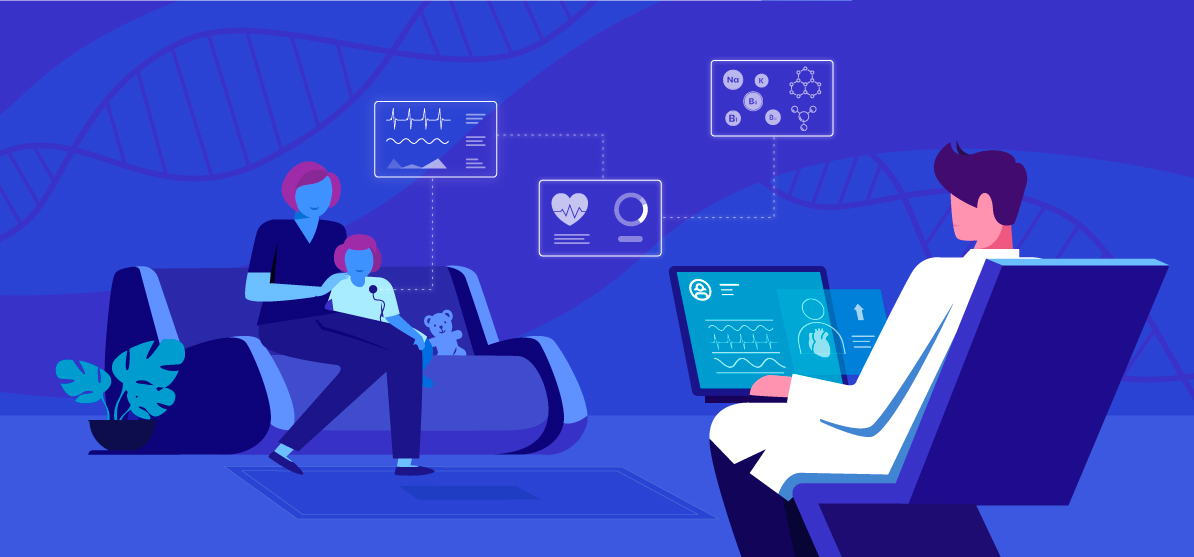Five worthy reads is a regular column on five noteworthy items we’ve discovered while researching trending and timeless topics. Most healthcare facilities already use the Internet of Things (I0T) to make their environment a more efficient and safer place, and this week, we show you how IoT is revolutionizing the healthcare industry.
 Illustration by Amirthalingam S
Illustration by Amirthalingam S
As the world’s population grows, so does the need for quality medical assistance and healthcare. With increasing demand for quality healthcare and improved patient outcomes, the Internet of Things (IoT) has the potential to make hospitals safer and more productive by interconnecting various systems and devices to work in tandem.
As more medical facilities move toward implementing IoT-driven equipment, the risk of malpractice, unsafe work conditions, and improper patient record handling are expected to decrease while reducing overhead. Sensors that can track and monitor patients from the moment they step into the facility and Real-Time Location System (RTLS) that uses IoT networks to track and monitor medical equipment and inventory are some of the current applications of IoT in hospitals.
When the demand for hospital beds far outnumbers the available infrastructure, it can be impossible for medical facilities to cater to the needs of the ill. IoT has the potential to help these facilities and their staff manage these logistical nightmares, and greatly reduce the risk of errors and inefficiency.
Keeping this in mind, here are five worthy reads that elaborate on how IoT aims to target pain points and optimize the healthcare industry.
1. 10 examples of Internet of Things in healthcare
It’s important to understand the full extent to which IoT can optimize the medical field. From ordinary household medical devices to hospital equipment, when connected to the internet, these otherwise ordinary medical instruments can collect valuable data, make smart diagnoses and predictions, and essentially give patients more control over their lives.
2. IoT in Healthcare: How It Improves Medical Software
As the industry continues to be revolutionized through technology, it becomes easier to understand its advantages and disadvantages. In this article, the author lists the pros and cons of IoT-driven healthcare technology through examples from technology already available on the market.
3. 6 IoT in healthcare applications leading to an improved industry
In order to fully understand and assess the future of IoT in healthcare, it’s important to take stock of its application and trends in the market today. In this story, the author cites industry leaders in the healthcare field who are currently pioneering the use of IoT and using it to its full potential. From mobile apps used for chronic disease management to devices that monitor and regulate an infant’s sleep cycle, these use cases pave the way for the direction in which IoT in healthcare is heading.
4. The Growing Role Of IoT In COVID-19 Response
There is no denying the air of uncertainty that constitutes the present-day climate. With the ever-present risk of infection from COVID-19, societies that have been brought together are now being advised to stay apart as a safety measure. While most of the world copes with relatively alien concepts such as social distancing, this pandemic has also brought about the application of adaptable IoT devices and equipment. This technology aims to track, quarantine, disinfect, and reduce infections in a remote and effective manner, greatly reducing human intervention.
5. Internet of Things (IoT) Healthcare Market is Expected to Reach $136.8 Billion by 2021
The increased use of connected devices in healthcare is a key driving factor for IoT in the healthcare market, among others. Key players like Apple Inc. and GE Healthcare Ltd. already hold high stakes in the market, making the US the largest stakeholder of IoT in the healthcare market. Many other factors such as economic development, favorable government regulation, and increase in research and development funding could greatly assist in speeding up the compound annual growth rate (CAGR) to meet or even exceed the expected rate.
It’s impossible for medical facilities to achieve 100 percent positive patient outcomes, but technologies that help move us closer to this goal can definitely be optimized. With the help of IoT, doctors and healthcare workers have been dealt an ace in the hole that, when implemented and leveraged successfully, has the potential to completely revolutionize the healthcare industry.
